Neda & I often reflect on our travel adventure and wonder how much we changed through the process. Did we become more relaxed in the face of stressful situations? Are we more comfortable with the unknown? It is hard to quantifiably measure such things. Certainly as we have returned into the flow of everyday life we notice those old ego habits we had hoped perhaps to leave behind. We can still be small minded, still get caught up in the dramatic stories we create, still be myopic and miss the big picture. It feels a bit like the title of John Kabit-Zinn’s wonderful mindfulness book, “ Wherever you go, there you are."
And yet things are different for us. We have relationships to the world we never could have dreamed of and a context to place our experience that makes it so much richer than before. And anytime we might forget these lessons, our trip seems to echo up from the past to remind us.
 Street Performer in a Melbourne alley Street Performer in a Melbourne alley One such example of this occurred a few months ago while we were driving over to my brother’s house listening to our satellite radio. The voice resonating through the speakers tickled not just our eardrums, but our temporal lobes as well. Suddenly we were transported back to March of last year where we spent an action packed day walking the alleyways of Melbourne. We had been checking out the various graffiti street art of the city when we stopped to listen to a talented street performer who crooned away while selling CDs from his open guitar case below. His voice had a unique twang that we had admired at the time…and suddenly were hearing in our car halfway across the world!
Sure enough, a quick look back at our pictures confirmed that it was the same guy! His name is Mike Rosenberg and he’s been playing on streets around the world to help finance his music, put out under the moniker “Passenger”. And just recently he made it big, with his hit single “Let Her Go” topping the charts in countries around the world. And what song did we happen to record on that sunny day in Melbourne? Listen for yourself:
And here’s the studio version:
 Mmmm...we miss Seoul! Mmmm...we miss Seoul!
The Passenger story is just one example of our trip reminding us of the depth of experience we gained traveling the globe. Other examples come to us anytime we go out to eat our favorite ethnic food. When we go out to Korean BBQ in Lansdale we can joke with the waiters about the districts of Seoul where they are from. Just recently a trip to a local Vietnamese restaurant led to the owner reminiscing with us about his days in Saigon (and comping us some spring rolls as well!). We speak in Thai to our waitresses and admire their hill tribe produced dresses and then later talk to an Indian friend of ours about our experiences in his hometown of Calcutta, which he returns to in a few months.
Then there is the recognition that it was not only us who was changed by this trip. The labor of love that is this blog affected others as well. This was very sweetly and poignantly demonstrated to us a few days ago, when my old friend and co-worker Lindsey Harvill prepared to depart for her own adventure. She wrote on Facebook recently:
“Backpacking through Thailand with Aldo Merino - just ourselves and these tiny packs!! Special thanks to Neda Fields and Jeff Fields who inspired me by sharing their insights on their blog during their world travels. I learned so much about the importance of respect for the culture and environment and how to fully embrace all aspects of a new experience.”
So what do we make of all of this? Perhaps it’s helped us to realize that transformation isn’t necessarily measured in complete overhauls to one’s personality. It’s measured in the smile that comes to your face when a song reminds you of a beautiful day. It’s measured in expressing interest and knowledge in a stranger’s homeland and finding that suddenly you are no longer strangers. It’s measured in how much we inspire others and the good that they then go on to do in the world.
Is it quantifiable? No, not really. But perhaps all these stories urge us to not be too hard on ourselves for the explicit ways we have not transformed by reminding us of the subtle ways in which we are ALWAYS transforming.
 The good 'ol days in Cambodia! The good 'ol days in Cambodia! Tomorrow I go back to work and this chapter of our lives officially closes. After over two years of travel, spacious freedom from the daily grind, and a daily stream of transformative experiences, it is time to re-enter the atmosphere. It is an event that has happened to all the world travelers we have met along the way, though while we were traveling it always seemed so remote. I remember speaking with Claudia in Cambodia about how she was counting down the days left until returning home for business as usual. Chris & Lauren had similar feelings in Vietnam as the days remaining on their trip grew shorter. Throughout our trip we encountered folks preparing to re-enter after their own amazing travel adventures, wondering what “ordinary life” would be like with the new lenses that they had acquired while abroad.
Returning to the US was the first stage in the re-entry and for Neda the final stage occurred fairly quickly, as she got a good job at the end of July. The first few months were difficult for her, adjusting to the schedule of a regular work week, to having so much less time than we did before. Tomorrow it begins for me, though I am excited about the work ahead with my new job. I will be managing workforce development programs for low-income youth in Montgomery County – looking at best practices to help them complete high school (or attain a GED) and transition into college or employment afterwards. It is good work, but even so Neda’s experiences warn me that the re-entry will cause a bit of shell shock the first few weeks.
 From infant to toddler - nothing reminds us of change more! From infant to toddler - nothing reminds us of change more! Still, if there is one thing our travel experiences have taught us over the past few years, it’s that change is constantly occurring in the world and within us, and that there is no real choice but to accept it. Whether it is the rapid development we saw in countries like India, the political upheaval in Catalonia, or the challenges of previously agricultural economies like Bulgaria keeping up in a world market, the one constant was change. At a personal level, little babies that we left behind when we started our travels (Ella, Lily, and Liam) are now running circles around us, singing songs, and playing with trucks. It is all enough to throw you off-balance, unless there is a rope to help keep your footing.
Luckily, there is such a rope. This past weekend Neda & I met up with my best friend David and his husband Steven in the quant town of Mystic, CT. We spent long hours catching up and enjoying the cuisine and beautiful setting of the area. But perhaps most impactful for me was a conversation David and I had about how much we had changed since meeting over 10 years ago. How more knowledge of the world has tempered the hot idealism of our youth and how our values have shifted as we have gained more and more experience.
 This is bound to be as our personalities and ego-minds are as subject to change as the rest of the universe. But while we can’t stay the same, we can find some grounding through these disorienting changes. And that is through constantly re-committing to the things that are important to us. It doesn’t matter if 10 years ago my commitments may have been different; it is the very act of committing that is the powerful one. In my current iteration, that means committing to bringing more mindfulness to my life. It means looking at all the tasks and changes ahead and embracing them instead of resisting them. It means bringing compassion to myself and others where otherwise there might arise fear and anger. And as I write out these commitments, I realize that perhaps they aren’t all that different from 10 years ago, it is simply the way I will implement them that will be different than before. And there is a certain beauty in that.
So one chapter ends and another begins. There is still more to come from Fields of Indulgence, but the nature of this blog will change as well. We hope to focus on highlights of the Philadelphia region as we explore it and our own lives through the spiritual lens that has been our thread throughout these travels. Thanks for joining us this far in the trip and I’ll see you on the other side!
After a brief summer hiatus, we finally come to the conclusion of our Essential Travel Gear series! In our last two posts we’ve covered essential travel gear for keeping your money safe and the best electronics to take for world travel. Now it’s time to talk about the little things that make a big difference in the long run. When it comes to staying healthy and keeping clean, a few little pieces of gear can make all the difference. Let’s take a look inside our bags... Massage Ball/Lacrosse Ball
 This might win the award for least expected, most amazing/useful gift received on our travels. When we first started out on our trip, we dropped by Columbus to visit our friends Nat & Rayn. We had a great time visiting food trucks and eating delicious meringues. Nat is a massage therapist and before we left he gave me a simple lacrosse ball. He said I could use it to work out knots on the road. OMG, was he right! This little ball has been our constant companion – you can roll your feet on it at the end of a hard day for instant relief, or put your back to a wall with the ball there to massage out knots in your lower or upper back. Calves cramping after a long day of walking? Rub the ball along the line where the shin meets the muscle and feel the aches melt away. Costing nearly nothing, this is a must have for any travelers! Thanks Nat!
Resistance Bands  Those pesky lats Those pesky lats As we traveled, yoga was our primary method for staying fit. After all, with yoga you only need a small space on the floor or ground to get a full body workout. But there are a couple muscle groups that even the most intense yoga workout leaves relatively untouched - mainly the biceps and the latissimus dorsi (back muscles). Typically you need equipment only found in a gym to work those muscles, which isn't available when hopping around the globe! By doing push-ups on the floor of your hotel, you can keep your pecs (chest) and triceps (the back of your arms) healthy and toned while traveling. But there is no easy way to work out your back and biceps. This is where the bands come in. To work both lats and biceps at one time, find a tree or a sturdy radiator in your room and wrap the band around it. Then grab each end, bend your knees slightly, and pull the band towards you. You want your elbows to scrape along your ribs and to pull your hands back to your ribs. This “rowing” motion will work both your biceps and your lats.
 Jeff demonstrating proper rowing technique using a coconut tree in Koh Lanta  Alternatively, you can stand on the band and do bicep curls like the picture on the right. Simply spread your legs further apart to work the biceps more (though this movement will not work your back like the above movement). By doing this and push-ups regularly you would never know I hadn’t been to a gym in over two years! Resistance bands come in different lengths and levels of tension, but the ones we used are made by Fitness Gear (click here for the link). We particularly liked these resistance tubes because you don't need the handles, which are unnecessary when trying to pack ultra-lite. Just build up your wrist strength and grab the ends (like the in the picture above) without handles. I used the "heavy" band and Neda used the "light" band – they easily fit around the circumference of our Porter packs.
Washing Line
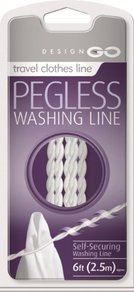 When you’ve only got two days in a place to explore, I guarantee that you’re not going to want to sit and do laundry while time passes by. And if you are traveling ultralite, it often doesn’t make sense to pay to get a whole load done. So you end up washing a lot of shirts and underwear in the sink with a bar of soap. But what to do about drying? That is where a clothes line ends up making life a lot easier. Just a simple piece of thin rope can do, but I like a design like this GoTravel Pegless Washing Line. It has hooks on either end as well as suction cups that can attach to the hooks, giving you maximum versatility. We could put the hooks around an outside balcony and dry our clothes or if no balcony, suction the ends to the bathroom tiles. It’s a tiny, but very useful thing for long-term travelers especially!
Vibram Five Fingers
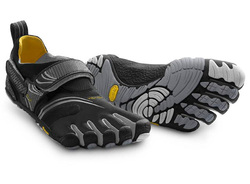 I mentioned these shoes in a previous post, but they deserve one more glance. The Vibram Five Fingers are quite popular now as a “minimalist” running shoe. The sole is so thin that it is almost like walking barefoot, and supporters say that it strengthens muscles in your feet that regular shoes don’t and encourages correct form in walking and running. I don’t know about all that, but I do know that they weigh nearly nothing. Neda’s model was the Bikila Shoe, weighing in at 7.5oz and Jeff’s the Komodo Sport (pictured), which at nearly double the size, still weigh in at only 14.5oz! Compare that to an average athletic shoe and you are saving 1.5-2.5 pounds of weight!
 The Five Fingers at the top of The Five Fingers at the top of
Gunung Berinchang, Malaysia The shoes really shine in their versatility. Forget about heavy hiking boots – we used these to climb the highest peaks of New Zealand and trek through the thickly wooded jungles of the Cameron Highlands in Malaysia. We used them as water shoes for snorkeling (though they don’t recommend that) and of course as shoes for morning runs. Want to do yoga outside? These are a great solution. And when you think about all the things you can do with that extra 2lbs of weight, they really are a no-brainer for travelers. We loved our five fingers!
Straightening Iron
 From trekking through jungles to navigating through the humidity of India, it is hard to keep your hair looking good! One of Neda's favorite little tools was this mini straightening iron. It is so powerful, that she was able to straighten all of her hair with it and smooth the frizziness away! She knew she made the right choice, when she found out that fellow traveler and hair stylist, Shea, also wouldn't travel without her mini BaByliss PRO Nano. This tool is so small that it just fits on the side of the pack and doesn't take up any extra space or adds any weight. It is also dual voltage to be used worldwide with the appropriate adapters.
That wraps up our series on essential travel gear for trotting the globe. Hope that this gear helps you on our journey and have a great trip!
My Mom and I drove out of her suburban development amidst torrential rainfall this morning. Despite the traffic and poor weather, we had a destination from which we would not be deterred. As we started driving she said to me: "You've traveled around the world, but it's here at home you'll see the greatest miracle of them all." She was right.
Summer Fields was born at 10:59am this morning and I have riding a wave of joy ever since. I've seen the morning sun beam onto the alabaster brilliance of the Taj Mahal, literally flown through the jungles of Laos, meditated in the holiest places of Japan, and climbed mountains in New Zealand that jut out of the earth as if they were the chess pieces of God. And while all these experiences have impressed upon my soul a true appreciation of natural beauty as well as a deep humility before my fellow man, they are like pale shadows compared to the joy that bloomed in my heart when I saw my newest niece for the first time.  Miranda, my little slice of cuteness Miranda, my little slice of cuteness I have felt an incredible connection to my other baby niece Miranda since we came home and have been caring for her during the week. She has already taught me so much about selfless giving, smiling just for the helluva it, and cherishing the moments that fly away so fast. But we didn't get home in time to catch her birth and so I didn't get to have the experience I had with Summer today. The experience of a life just beginning, full of unlimited potential, and surrounded by love. I can't wait to continue to be a part of her life as I am a part of Miranda's & Summer's big sister Ella. To share in her triumphs and her oops's and to see her learn from both.

Mom & Dad gaze at their creation in awe

Aunt Sam & Grandma Fields with Baby Summer

Ella meets Summer for the first time with Gaga Lyn
Today was truly a great day. While we were traveling our eyes were continually opened to new cultures, new languages, new foods, and new friendships. It was such a wonderful experience to feel like a baby again in the arms of the world. And then to come home and look into the eyes of one who is just awakening to this world - its joy and sorrows, causes deep feelings to arise. It makes me look anew at being careful stewards of this place we call home and the people who live within it so that our children can be cradled the same way I have been. It is both joy and responsibility rolled into one, feelings I didn't used to equate with one another! It is a commitment to love more fiercely than ever so the warmth of that love may spill out on others when they are feeling cold. The warmth of Summer.
Mini-Speaker  If you’re a music fan, then a mini-speaker is an essential piece of gear on your travels. Single capsule speakers like the X-mini produce great sound while weighing almost nothing. I can’t count the number of times we ended up hanging out with other travelers and used our mini-speaker to turn the night from hanging out into a full blown party! Yeah, your phone has a speaker, but once you hear what these tiny things sound like, you’ll be converted.
Smartphone  Shea & Jeff in Amsterdam Shea & Jeff in Amsterdam The debate about the best smartphone rages over the web and is outside the scope of our humble travel blog. We carried an unlocked iPhone 4 for the whole two years and it performed admirably. But I want to focus on two particular features/apps that really made this an indispensable piece of travel gear beyond its functionality as a phone. Firstly, the locating function of the phone can work even without a Simcard through the use of cell phone tower triangulation. This is brilliant because even without internet, you can locate where you are and find a location you’ve previously tagged. All you need to do is use free wi-fi when you have it to tag ahead of time things like your hotel, a train station, a restaurant, or a museum. Then when you are out and about, simply pull up the tagged locations and you can see where you are in relation to them. We used this function all the time and we were never lost no matter where we traveled. A big shout out to Shea McJagger for the tip!
 ProHDR Shot of ProHDR Shot of
Marian Lake, New Zealand Regardless of your phone, the most used app for us by far was ProHDR. Available for iphone and android this app allows you to take brilliant HDR photographs. For those of you unfamiliar, HDR means high dynamic range and is the process of taking a picture at different exposures and combining it to achieve one picture with great lighting effects. For instance with a normal compact camera, you might snap a photo with light exposure that makes the person in the foreground look good, but washes out the beautiful sky behind them. With ProHDR, it takes two pictures at different exposures and then automatically combines them on the phone, bringing that sky out in vivid blues. Before this app, it would take hours on photoshop to produce pictures of such quality. I’m not saying that it is exactly as good as photoshop, but considering it takes only seconds and costs a mere $2, this app made travelers with thousand dollar cameras envious. If you like taking photos, it’s a must have and was another recommendation from the illustrious Shea McJagger – you rock girl!
 As you can see from these shots at the Moeraki Boulders in NZ, the difference between ProHdr and a regular camera can be the difference between a bright blue sky with clear foreground and a washed out, fairly colorless shot whose exposure is all wrong. Joby/Portable Tri-pod Even with the ProHDR app, there are times when you will want to zoom or have to take pictures with a higher megabyte content. Probably you’ll take along a compact or even larger SLR camera with you if you like to take snaps. I won’t recommend a particular camera here as they change all the time and you can get better information online, but I will recommend an accessory for any camera – the Joby! 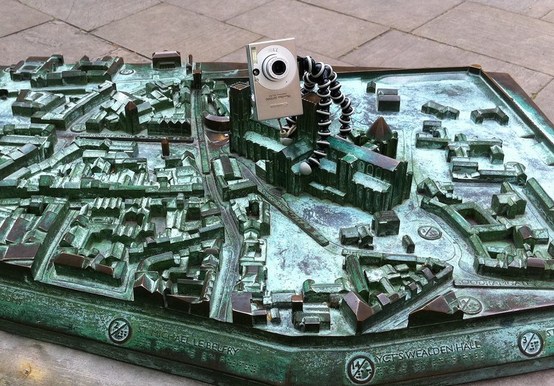 Our Joby attacks the scale model of York in order to snap the ideal shot This flexy-legged tripod was great for taking pictures of the two of us when no one was around. It could attach to trees, be sturdy on rocks, or hang from any random thing you can find to get the shot you want. We used the little one for our compact, but there are larger ones as well if you’re committed to carrying a big SLR camera. Netbook or Tablet? Most travelers we met had at least one smartphone with them, which is smart given its versatility and small size. But the question of what other major electronic device to carry is an open one. As tablets have increased in popularity, they make a good argument for usage while traveling due to their small size. But after extensive research, Neda & I decided to go with a small netbook instead, and we were happy about the decision. For us, here are the advantages of the netbook over a tablet:
- A typical netbook provides 250GB to 320GB harddrive. This is plenty of space for backing up your photos while traveling. A typical tablet is between 8-64GB of storage, and doesn’t allow you to store things like pictures.
- A netbook has a keyboard attached making things like writing blogs easier.
- A netbook allows you to install any software you want like Microsoft Office, Photoshop, etc.
- A netbook is maybe a third or fourth of the price of a tablet, making it less costly if you lose it and easier to replace.
So there you have our top tips for making the most of your electronics while on the road. In part 3 of the series, we’ll tackle the best gear for health and grooming while traveling. See you there!
 23 months of travel. Countless pillows. Innumberable tables where we sat to write this blog. We have moved around so much and yet for me I have discovered a 2nd home in Bulgaria. Our last week in the country was hard as we met up with the great friends and family that we have been able to reconnect with while in Bulgaria. We had dinners with Neda’s cousin Gosho and his girlfriend Raya, slacklining in the park with our friends Joanna & Morgan, who we met in Thailand, and celebratory drinks with Neda’s old friend Kaloyan, who along with partner Rumiana, were celebrating the birth of their first child. And even as we raised our glass in cheers, there was sadness as our family had just visited Neda’s grandma Marika, who was lying in bed close to death.

The last picture Kaloyan and Rumiana took before little Kaloyan Jr. popped out!
 How do we reconcile the closeness we feel for this place with our decision to leave? I tell myself that finally it’s time to go home, but I am no longer certain where home is. Zen teaches us that home is a construct that we are constantly destroying and re-creating to find stability in this changing world. And while that abstraction may lend some comfort, it doesn’t feel any better to know it will be too long before we see all of our friends and family in Bulgaria again. Our last dinner in Bulgaria was with Neda’s oldest friend Petya and Dimitar, another old friend from high school. As we caught up on our lives eating delicious Bulgarian cuisine and speaking completely in Bulgarian, I couldn’t help but feel that life here was just beginning even as we were preparing to leave.
But how do we choose to whom to say goodbye and to whom to say hello? My Mom gave us a thrilled hug when she saw us walk through the terminal doors and it was wonderful to see her after so long. Yet as we drove back to Lansdale Neda called her parents to find out that Baba Marika had indeed died the day after we had seen her. We had made it to one hello and missed another goodbye.

In Memorandum: Baba Marika with her family during a visit in 2009
 As if it were the universe’s cosmic plan to remind us of this crazy cycle of birth and death, as Neda hung up with her parents with tears in her eyes we were only a few minutes away from my sister’s house. Sam and her husband Gary were waiting outside in the driveway, with a little bundle of joy in their hands, their new daughter and our new niece, Miranda Hope Koellhoffer. When I looked into her sweet eyes and heard her gentle cooing, the miles we had traveled melted away and I immediately noticed that familiar feeling already starting…here with this baby in my arms, I was beginning once again to create home.
It’s probably healthy to let go of our attachments and go through these changes in life in order to keep ourselves from growing stagnant. But I already miss my family and friends in Bulgaria, I miss talking in Bulgarian to little Marilenka, playing backgammon with my father-in-law, and discussing the nuances of Bulgarian language with my mother-in-law. I miss tomatoes whose flavor nearly knocks me unconscious and the view of the Bulgarian countryside when I run atop the hills bordering our neighborhood. But I don’t miss not being able to be a part of my nieces’ lives. My other niece Ella is over 2 years old now and chatting up a storm. She already called us Uncle Jeff & Aunt Neda as she carefully made sure we had enough ice in our water at dinner. And so it goes…to say hello we have to say goodbye.

Lauren, Neda & Ella give us big smiles!
I never expected to feel so much a stranger in my own country. The accents sound strange, the lawns seem so big, and the clothes and bodies look so different (sorry America, but our bodies tend to be quite a bit bigger than everywhere else in the world!). I feel blessed to be given even the smallest glimpse of what it must have been like for Neda and her family when they came from Bulgaria to America 15 years ago. At that time they became a part of two worlds, a family with two homes. And now, in some small way, I’ve joined them.
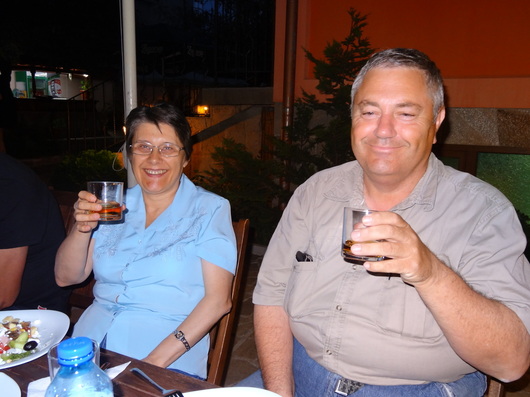
We miss you Nadia & Petko!
Whether you are preparing for a globe-hopping trip or just a two week stint in a foreign land, having the right travel gear can be the difference between stress and relaxation. We did lots of research before our trip and also got some great advice from travelers along the way. Now we want to share with you the most useful gear we used for traveling the world, especially when you want to keep things light and cheap.
 These folks didn't follow our packing list...tsk tsk tsk In Part 1, we’ll focus on gear that keeps your money safe, perhaps the number one concern for a traveler. Of course, the bag you bring might be the most important aspect of your travel gear, but we covered that in our last post on How to Fly Around the World Without Ever Checking a Bag. Wallet
I admit that I’m a pretty picky wallet guy. I don’t like anything too bulky but I do like lots of areas for storage. I guess I like to have my cake and eat it too. With the Pacsafe WalletSafe 100, I was able to do just that. This tough nylon wallet’s main security feature is a metal chain that connects to the belt loop of your pants via a secure hooking mechanism. It comes on/off easily and allowed me to be much more relaxed walking through cities. No pickpocket could get this wallet without clearly alerting me to the attempt. It is easy to clean and has enough pockets for many credit cards as well as a nifty little zip pocket for change that I used all the time. Also, if you don’t want to use the chain, there is a velcro pocket to store it in. Since I always use it, that velcro pocket comes in handy for random little things you want to keep safe, like a key for instance. An important note about wallets – I only ever kept a bit of cash, one credit card, and one ATM card in the wallet – everything else went in the security pouch (see below). Security Pouch
 Even with a secure wallet, there are still some things you don’t want to leave within reach of a possible pickpocket attempt. Things like your back-up cash & credit card, passports, and maybe the keys to your travel locks. When I traveled around Europe ten years ago, I used a security pouch that hung around my neck. But stuffed with passports it was visible through my shirt and also was pretty obvious when taken out. For this round, I bought an Eagle Creek Hidden Pocket, and it worked wonderfully. The hidden pocket attaches to your belt and goes down your pants right behind your front pants pocket. It is large enough to hold passports and has two little pockets if you want to put things like passport photos or folded up cash inside. I found that even with 3 passports and cash inside, I could wear it all day with jeans without it being uncomfortable. Also, to take it out you can just reach down and flip it out – much less noticeable than pulling a big pouch out from under your shirt. If you are worried about leaving passports in your room or if you are staying a hostel – the security pouch is an essential and inconspicuous piece of gear.
No fee ATM Card When traveling it’s obviously best not to carry large amounts of cash at a single time to prevent loss in the case of theft. The problem is that banks like Bank of America charge an arm and a leg to take cash out internationally. Not only do you pay the fee for the ATM, but Bank of America charges you their own fee as well. That means that it can often cost $10 or more just to take out some cash! While there are several ATM cards that offer rebates, after research and two years of use, my recommendation is the Schwab Bank High Yield Checking Account. Opening an account with Schwab is free and there is no minimum amount of money required in the account, so there is nothing to lose. It is easy to connect your Schwab account with other accounts (like your Bank of America) so you can transfer money to it electronically while you travel. This way you don’t have to keep a large amount in your Schwab account for peace of mind in case the card is stolen or somehow utilized (which is unlikely with the pin code). But the true highlight of the card is that it can be used at any international ATM and that it reimburses all ATM fees you are charged! In Thailand the charge was usually about $5, so at the end of each month our statement would show $30-$50 of ATM fee's returned back into our account!
This is particularly nice because now you can just take out smaller amounts of money at a time. I remember when using a traditional bank account while traveling I used to take out large amounts of money each time because I didn’t want to keep paying fees. With the Schwab card you don’t need to worry about that anymore. Honestly, with all the fees in the US these days, the card is great for domestic use as well. I tried it out at one of those private ATMs in a bar in the states and sure enough got the $5 debited back to my account at the end of the month. There is nothing to lose and only ATM fees to save – so why not?
Purse/Messenger Bag Last, but not least, a secure purse/messenger bag, is a great piece of gear for any traveler – man or woman. While the wallet is the go-to for cash and cards, the purse can hold all sorts of essential gear while traveling like keys, phone, headphones, etc.. But when walking the crowded streets of a 3rd world country, it can be hard to feel secure with any purse. For us the solution was CitySafe 200 Shoulder Bag, which we nicknamed “the tank”.
The CitySafe 200 contains a stainless exo-mesh under its water-resistant nylon exterior, making it impossible for a thief to slash the bottom or side to gain access. The shoulder strap also has steel reinforcement and comes with a brilliant security feature. One side of the strap detaches with a metal hook and allows you put the strap through a chair or other fixture. This was crucial while at bars or restaurants, where we didn’t want to always have to keep one eye on the purse. We could simply affix the bag to one of our chairs and be sure it wasn’t going anywhere.
 Other key features of the purse are the intelligent ways the pockets are designed so that the direction in which the main zipper opens is the opposite of the way in which the security pockets within open. In other words, if a thief manages to open your purse (which is unlikely since the main zipper has a small hook on the end that needs to be detached in order to open), he/she has to reach all the way across the purse in order to then open the internal pockets. Add to that a pocket that blocks RFID readers and you’ve got a portable safe on your hands. Neda would usually carry the bag for everyday use, but if we felt we were in a dodgy area or on travel days when we were more exposed, I could carry the bag on my front with my arm on top and it would be near impossible for a thief to access.
So there you have it - all the essential travel gear we used for keeping our money and valuables safe. Let us know how it works for you if you use any of it. In part 2, we’ll discuss the best electronics for the savvy traveler. See you there!
Over the last two years we’ve taken 26 flights, of which 18 charge for checking baggage over 10kg (for some as low as 7kg). Yet with careful planning and a bit of bravado, we never paid for a single checked bag on our trip around the world. We’ve gone back and looked at each airline’s baggage fees and calculated that by not checking bags, we saved $1,182. That’s a lot of sushi rolls, plates of Pad Thai, or bowls of curry! So what’s the secret to spending money on YOUR travel and not the travel of your bags?
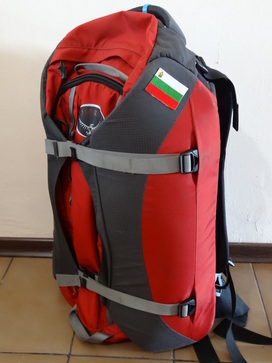 Neda's Porter still looks good after 2 years! Neda's Porter still looks good after 2 years! The Bag – Your Life in 22” x 14” x 9” Nylon ShellThe first step is getting the perfect luggage for a traveling vagabond. For us the research distilled down to the Osprey Porter, an amazing travel pack for several reasons. Firstly, it is the exact dimensions for carry-on luggage around the world. To help with making sure the pack fits into the little metal measuring cage the airline check-in staff sometimes make you put it in, the Porter is equipped with two compression straps. The straps have two settings for either mild compression or for full compression. We found that when “fully compressed” we could not only fit the bags into any plane, but often just threw them overhead onto buses as well. This was particularly nice in places like India where we had our packs inside the bus while other travelers had to tie their packs onto the roof!
 This is where you don't want you pack!
Courtesy of http://www.tryanythingonceblog.com/tag/packing The Porter can easily serve as a weekend duffle because the shoulder straps hide behind a back panel. For our purposes, we almost always carried it on the back, and found the straps to be amply comfortable for up to about an hour or so of walking. This isn’t the ideal pack if you plan on walking the Camino de Santiago, but for walking around town to find your hotel, it’s no problem and its smaller size encourages you to take less in the first place! Still, we found the spacious main compartment large enough to fit all of our travel gear, with some deliberate planning.  Our Pack Set-Up Our Pack Set-Up Become a PackratA good packing system perfectly complements the layout of the Porter and will have you breezing through airports. We used one folder and one half cube of the Eagle Creek “Pack-It” system. The folders vary in size (we used the 15” inch size for Neda, who is a fairly small girl, and the 18” size for Jeff who is 6’2”), and neatly fit jeans, shirts, sweaters, and the like. The cube fits all the small stuff like underwear and socks. On top of the cube there was room to put a small zipping bag (my mom had gotten it from a make-up promotion) where we kept computer charger, phone charger, and other small electronic stuff. Next to the half-cube we put a deluxe size REI toiletry bag. While it looks like that isn’t available on their website any longer, this one http://www.rei.com/product/834727/rei-grande-shower-kit, seems similar. Once you’ve got all that in your pack, there is still room to put a pair of sandals and a pair of Vibram Five Fingers, which were a perfect travel sized athletic shoe. We could run, snorkel, and hike in the five fingers all while carrying around only 14oz of weight for Jeff and 7.5oz for Neda! Finally, on top of the shoes we squeezed our Osprey Daylight Daypack, which we used for our day hikes and trips around the cities. The pack is supposed to be able to “add-on” to the back of other larger Osprey packs, but we found that for the porter we could just stuff it in on top of everything else and it would work just fine. We only used one daypack as Neda usually carried a pursue with more secure things inside.
 Look how small my pack is!? To recap, if you want to be an “ultra-lite” traveler, there isn’t room for many extras. My wardrobe while traveling consisted of 5 shirts (one of which doubled as a workout T and backup when everything else was dirty), one pair of shorts, one pair of jeans, a fleece (for cold weather destinations) and a jacket. It’s not much, but it makes picking your outfit pretty easy!
 eVest packed to the brim eVest packed to the brim
on our way to Tokyo. Making Weight – the Scott EvestWe’ve talked above about the size of your luggage, but these days it’s not just the dimensions that have to work to be able to carry-on, it’s the weight as well. Most airlines allowed us 10kg, though on discount carriers that did not include a “personal item.” So the old trick of stuffing the purse wouldn't work. All 10kg have to be in one bag. Some of the worst airlines only allowed 7kg per person! We usually would wear our heaviest clothes like jeans and walking shoes on travel days no matter how hot it was outside. But our secret weapon in making weight was the Scott Evest. The jacket is designed with 20 sturdy pockets that can fit all kinds of things inside. On one side, there is a big pocket where I would put our netbook; on the other side, the bag filled with chargers.
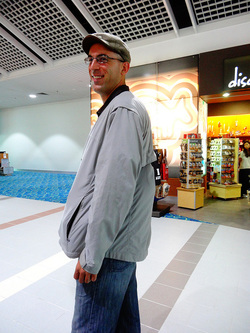 Can you see the sandals in the Can you see the sandals in the
pocket on the back? In the back there is an extra pocket where the jacket can fold into itself and become a pillow (great for long bus rides!). But I used it to store my leather sandals, since they weigh a little over a kilo. Other pockets would hold heavier knick-knacks like our travel locks or my electric shaver. With one of those flights that limited us to seven kilos, the travel-vest managed to carry along the other five without being noticed by airline staff! Beyond its usefulness in the airport, I thought the jacket looked pretty snazzy and managed to keep me pretty warm even in chilly environments. It’s an all around great piece of travel gear, though it does come in at a rather steep $135 for the standard version I had. Which brings me to the next point of order…my family got us a bunch of different gifts to support us along our travels and we used all of them, but in the end the travel vest has to win the award for most useful. Thanks Dan for all the research (and cash) you put into it. You were with us in spirit the whole time!
 Travel Vest in Action - this pic is street art in Melbourne.
Also note the small daypack on my back  All of our clothes and toiletries All of our clothes and toiletries Psychological Warfare – Passing the various checkpoints and getting onto the plane
O.k., so you’ve got all your fancy gear and you’re packed up and ready to go. Only with the extra souvenirs you bought, you realize that your pack is 12 kilos even with the E-vest loaded to the brim! What to do? It’s happened to us a few times and here were our strategies for getting through the airport:
* Wear layers – I would wear a shirt, the fleece, and the evest to keep the pack’s profile down. Not the most comfortable, but sometimes necessary
* Do a “counter drop” – when Neda & I would walk up to the counter to check in, she would let her purse drop to the floor and I would be carrying the daypack (with the extra weight in it) in my hand and also drop it. Usually the staff don’t see the bag since it’s not in their line of sight. Then, when they ask us to put the bags on the scale to be weighed we can make weight. 90% of the time the only weight check is at that counter, so if you can do a successful counter drop even when you know you are over weight, you’ll have a good chance of getting through. It's a bit sneaky, but so is charging us 30 euros for an extra two kilos!
* Wear the packs on your back – you’ll probably do this anyway, but we found that when most airline staff glanced at the packs they never even asked us to weigh them – they look more like school backpacks than luggage!
* Be ready for other checkpoints – a few times I took my fleece and jacket off and carried the computer in my hand since it can get hot to wear all that stuff. Once, right before security, they did another weight check. Luckily the computer was hidden under the fleece so it looked like I was only holding my jacket (which they don't make you weight) because I only passed that check by .3 kilos!
Lighten Up
So there you have it folks – the gear and the strategy for saying goodbye to airline baggage fees forever. If you hadn’t noticed, it does require a certain commitment to the ultra-lite traveling lifestyle. Simply bring less stuff when you travel and make everything you have count. The longer we traveled, the more grateful we were for that decision and with each leg we found we brought less and less. It’s liberating to be able to fit everything into such a small space and gives you so much flexibility when riding buses, taking taxis, and walking around town. Though we used this gear for world travel, we are committed to using it whenever we travel from here on out. So get to it and have a great time! Happy trails!
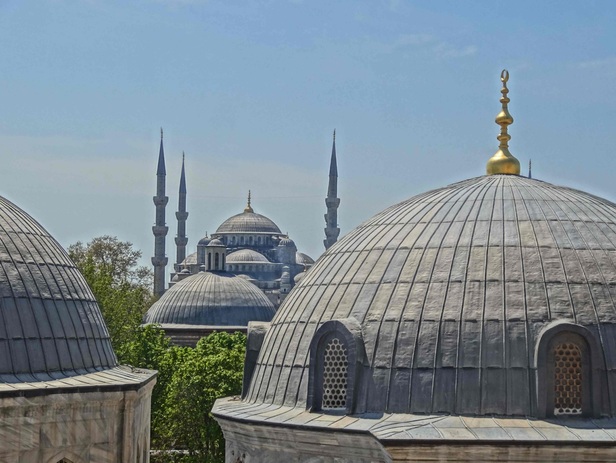 A picture taken from inside Hagia Sophia shows the dome of the church with the Blue Mosque in the distance We embarked on our longest plane flight as we took the massive trip from Seoul to Istanbul, with 2 stopovers in China, for a total of 22 hours! Having completed the Eastern leg of our trip, the irony wasn’t lost on us that we flew into the only city that straddles two continents. One side of Istanbul sits in Europe while the other sits in Asia. So we were literally just a river’s width away from being back on the Asian continent!
While the trip itself was exhausting, the end of it was joyful as we saw Petko & Nadia waiting for us as we emerged from customs at the airport. They had driven down to explore Istanbul with us and we were in for an action packed few days. Istanbul has a tremendous amount to see and do, having been the capital of the Byzantine Empire for 800 years and the Ottoman Empire for close to 500.
 View of Rustem Pasha Mosque View of Rustem Pasha Mosque Our first day was to some of the city’s most spectacular sights. We walked across the Golden Horn (named after all the gold the Byzantines were said to have thrown into the harbor when Constantinople was being sacked by the Ottomans) to stunning views of the mosque lined old city. The New Mosque is the most conspicuous of the mosques along the waterfront and its construction is intermingled with two often oppressed groups: women and Jews. In this case the one was working against the other. The construction of the mosque was ordered by Safiye Sultan, the wife of Sultan Murad III during a time when women controlled much of the political affairs of the Ottoman Empire while the Sultans abdicated much of their power in favor of partying and enjoying their harems. Unfortunately, Safiye Sultan’s motivation in building the mosque was due to its location in the city’s foremost commercial center, where many Jewish merchants lived. Local and foreign merchants had grown jealous of the Jews’ success in the area so the building of a mosque was a convenient way to legally seize Jewish properties, a story we have seen in many other cities.
 The new mosque sitting in its busy market district 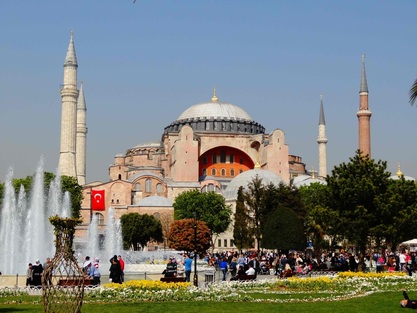 Hagia Sophia Hagia Sophia As we strolled through the city we came to perhaps its two most famous sites. Hagia Sophia and sitting right across from it, the Blue Mosque. Hagia Sophia is a masterpiece of world architecture, having been built in 537 and remaining the largest dome in the world for nearly a 1000 years while also being the seat of Byzantine Power during that time. Sultan Ahmed Mosque, or the Blue Mosque sits across from Hagia Sophia with a small park and water fountain in between them. It is a massive structure with 6 minarets (and issue of contention since the Grand Mosque in Mecca had 6 at the time and the Blue Mosque was seen as an egotistical challenge to its power) that is filled with Iznik tiles, a traditional ceramic painted in hues of primarily blue, white, and sometimes copper-red. We finished the day with a visit to the Mosaic Museum, where mosaics from the Great Palace of Constantinople have been unearthed and are on display.
 In front of the Blue Mosque with Neda's parents, Nadia & Petko  At that point everyone was exhausted, but Jeff had energy for one more site as he headed down into the bowels of the city to explore the Basilica Cistern, an ancient water holding area built in the 6th century. It was capable of holding 100,000 tons of water in its hey-day and was an engineering marvel, containing 336 huge marble columns to support its cathedral sized chamber.
 The next day we explored Topkapi Palace, the primary residence of the Ottoman Sultans for over 400 years. The complex is huge and it took us nearly an entire day to move among its courtyards and various buildings such as the King’s Harem, Audience Chamber, Library, and summer pavilions. It was particularly pleasant due to the lush tulips that were growing throughout the palace. Still, I couldn’t help a cringe when passing the circumcision room – dedicated to the deed for young princes. But I felt better for them after passing the beautiful apartment of the Crown Prince in the Royal Harems, where, according to the sign, the princes were trained in the “discipline” of the Ottoman Harem. We also visited the Grand Bazaar on this day, but were slightly disappointed on how it was essentially more of an over-priced indoor mall with aggressive shop-owners rather than an old style market selling anything close to authentic goods. For the most part we found this to be the case of any of the well-known markets.
 yeah, I'd chill out here...one of the many grand buildings in Topkapi Palace  Each day of our travels was an indulgence in different kinds of Turkish food. For Neda and me it was particularly refreshing to find so much fresh fruit, most of which Turkey grows itself. This is in contrast to places like Japan where fruit is imported and quite costly. For just $1.50 we could get a glass of fresh squeezed pomegranate juice and for only fifty cents a glass of orange juice. Sufficed to say, we drank a lot juice. The cuisine itself was mildly disappointing for us as it seemed quite greasy and didn’t compare favorable to Bulgarian cuisine, with which we are well acquainted. Meat dishes were generally just grilled (like meat kebabs) without much seasoning and the mezzes (side dishes) we tried were oily and not terribly interesting flavor-wise. Unfortunately we also struggled to find authentic cuisine because every restaurant in the city seems to be on tripadvisor and those where the locals are eat are usually just places with pre-cooked food being kept warm. You just enter and pick out the food you want. It’s cheap, but not exceptionally fresh or tasty.
 Turkish coffee goes great with sweets! Turkish coffee goes great with sweets! In contrast to the main courses, the sweets were a highlight of our time in Istanbul. Local bakeries made melt-in-your mouth baklava at reasonable prices and the halva (a dense, flaky sweet made up primarily of tahini and sugar) was to die for! Often lunch for us would just be a sampling of different offerings at the bakery – real indulgence! If you’re going to Istanbul though, watch out for the popular tourist markets – there you’ll find overpriced baklava made with simple syrup instead of real honey, an experience better avoided.
 The Whirling Dervish Hall The Whirling Dervish Hall Our 3rd day in Istanbul was generally considered the favorite by the family, though it started with two “misses”. The first was the Galata Mevlevi House, a Sufi lodge in the Whirling Dervish tradition. The order was originally founded by Jalal ad-Din Muhammad Rumi, one of Neda & my favorite poets and spiritual thinkers. Unfortunately, the “museum” did a first rate job of making Sufism uninteresting and included no audio or visual presentations of a tradition that has to be seen and heard to be understood. It also only has Dervish dances once a month, making it difficult to see an authentic version of the famous spinning dancers, who have been thoroughly commercialized in the city due to tourist interest. The second miss was a trip to the exceptional Church of St. Stephen the Bulgar, notable for being completely pre-fabricated of iron. That’s right, the whole church was made in Vienna and then shipped to Istanbul to be put up in the late 1800’s. It was only a miss because the whole church is closed for renovation.
 Talk to the hand devil  Righteous on my right, sinner on my left Righteous on my right, sinner on my left The day started to redeem itself, however, with a trip to Church of the Holy Saviour in Chora. The beautiful Byzantine Church contains captivating murals built through the patronage of Byzantine statesman Theodore Metochites. The murals are the finest example of the Palaeologian Renaissance, which was a flowering of Byzantine art and culture after the sack of Constantinople by Venice. Eventually the city was won back by the Palaeologan dynasty, though it was permanently weakened in what would only be a prelude to the Ottoman conquest 150 year later. However, the sacking scattered Byzantine artists into various different regions so when they returned they incorporated the styles they had learned into the new murals. The result is more humanistic representations of the religious life of Jesus than can be found anywhere else in the Byzantine world. Once could see how the story of Christ’s life and the Virgin’s life would have seemed to come to life to parishioners practicing in the church at the time.
 Just a few blocks from the church sit the famous Theodosian Walls that protected Istanbul from invasion for 1000 years. The walls repelled Arabs, Rus’ and Bulgar invaders over the years and was even able to repel cannon technology for a while (soldiers would rebuild the fortifications during reloading of the cannons!). Eventually the Ottomans overpowered them, but they still stand as one of the most important defensive structures of antiquity. For our part, a steep climb up the walls led to sweeping views of the city and worked up an appetite for a local lunch next to a mosque and some Turkish coffee afterwards! After the walls, our next activity was a beautiful cruise up the Bosphorus strait in the direction of the Black Sea. Along the way one passes beautiful palaces by Sultans, old fortresses used to attack the city, and riverhouses built by wealthy Ottoman citizens at the height of the empire.
 Dolmabahce Palace on the Bosphorous  The fortress of Europe on the Bosphorous was used to choke Istanbul's supply routes during the siege that won the city for the Ottoman Empire What better way to end our favorite day than going to a Turkish Coffeehouse, where Nadia & Pekto tried their first Hookah! Nadia picked the strawberry flavor and we all sipped on Linden tea while laughing good-naturedly at the parents’ attempt to master the smoking process.  Our last day was one of relaxation, shopping in the city’s bazaars, and visiting the Istanbul Archeological Museum. Some notable objects we enjoyed there were the world’s oldest love poem, the world first written peace treaty (dating from 1258BC), and some amazingly well preserved Sarcophagus’ from the 4th century BC, found in the area of ancient Sidon. The next day we headed out of town with a stopover close to the border at Edirne to see the famed Selimiye Mosque, a towering structure considered a high point of Islamic architecture. From there we crossed the border into Bulgaria!
Neda & I joyfully ate our first shopska salad and Bulgarian kebabs in more than 6 months and appreciated being in a country where we could understand what was being said. This leg was our longest away from home taking us to India, Malaysia, New Zealand, Australia, Japan, and Korea. It is also our last major leg, as we don’t plan on doing any more traveling (other than around Bulgaria) and than heading back to the States in the next few months. Thanks for following our travels these past two years and stay-tuned for follow-up posts about lessons learned on the road!
Our last few posts have been focused on a combination of Zen & history as we traveled throughout Japan. There is no doubt that South Korea is full of both with its own tradition of Zen Buddhism as well as a fascinating history dating back to the era of the 3 Kingdoms and continuing through the Joseon dynasty, which was one of the most enduring monarchies in history. South Korea’s more modern history in the 20th century includes the Japanese occupation, the division of the peninsula after WWII and the ensuring war, as well as the country’s meteoric rise as an economic power would all be grist for a great post. But instead of all that we’re going to focus on something truly scrumptious – the delicious food!
Bulgogi
 Bulgolgi we cooked at Food & Culture Korea Academy (see below) After a short flight on the absurdly cheap Peach Airlines from Osaka to Seoul (for $30/person!), our first stop upon getting into the city was for the famous Korean BBQ. If you’ve never been to a Korean BBQ restaurant before, its unique feature is that the meats are cooked at the table in front of you with a variety of vegetables and sauces.
 Our first bulgolgi in Korea! Our first bulgolgi in Korea! Our first dish might have had to be the heart of Korean BBQ – Bulgogi. Bulgogi is thinly sliced sirloin that has been marinated in a sauce consisting of soy sauce, sesame oil, minced garlic, pear juice, and a bit of sugar and spice. It cooks on a grill in front of you with green onions, carrot, onion, and mushroom. The result is a melt in your mouth experience that has been with Korean people since the time of the Goguryeo kingdom (37BC-668AD). It was immensely popular until Buddhist influence spread over the peninsula and the carnivorous dish took a backseat, only to be reintroduced with a vengeance when the Confucian-focused Joseon dynasty came to power in 1392.
 To learn a bit about Korea’s fascinating history, we headed over to the National Museum of Korea. There we saw an amazing gold crown made for the Kings of the Silla Kingdom (who defeated the Goguryeo Kingdom above with the help of the Chinese Tang dynasty). Its complex symbolism includes tree branches symbolizing the world and horns symbolizing reindeer. It also had little embryo shaped pieces of jade attached to it that may have symbolized fertility. The most impressive piece for us was a gracefully carved bronze “Pensive Buddha” which was also from the Silla Kingdom. Here, Prince Shakyamuni sits contemplating the world with one leg crossed on top of his thigh and his hand gently holding his head. To me it is like the Eastern counterpart of Rodin’s “The Thinker”. Interestingly, the Thinker is muscle bound and hunched over while the Pensive Buddha’s posture is fairly upright and his body thin. Do the two sculptures tell us something about the differences between the cultures of the West versus the East?
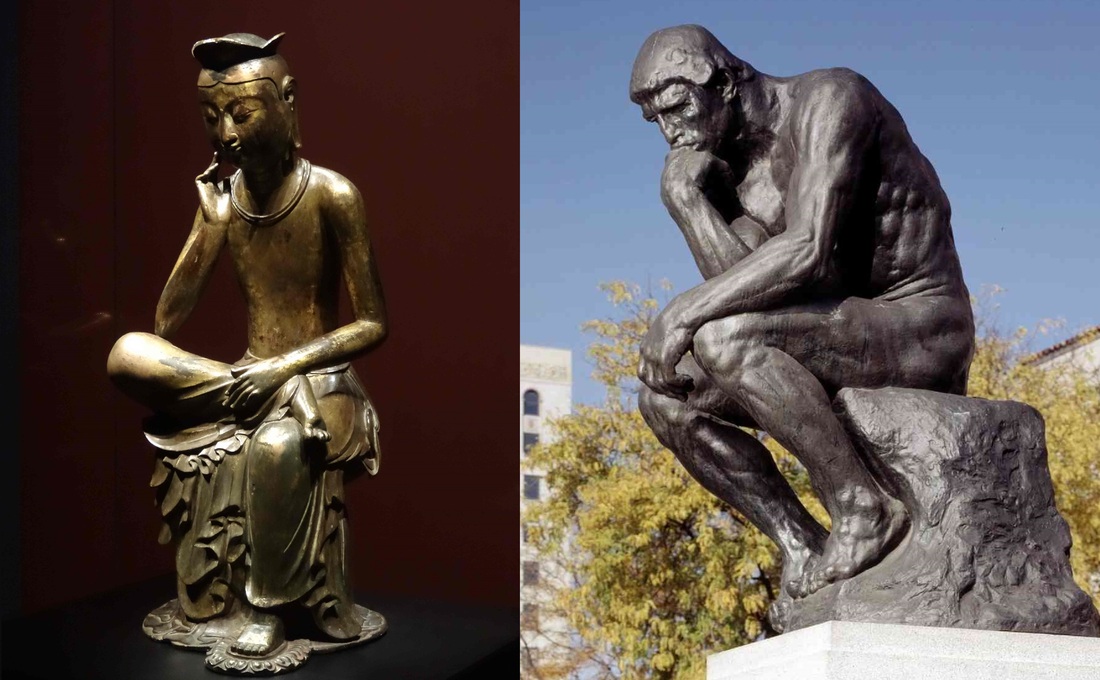 The similarities are remarkable - this is our picture of the Pensive Buddha - the Rodin pic is linked to its original source. Juk  Traditional Korean juk After the museum we headed down to Yeouido Park where we saw that our short hop on the plane had taken us right back into Cherry Blossom season! The Koreans weren’t quite as enthusiastic as the Japanese with their Hanami parties, but everyone was still enjoying the delicate blooms blowing in the wind along with the flavors of festival food. 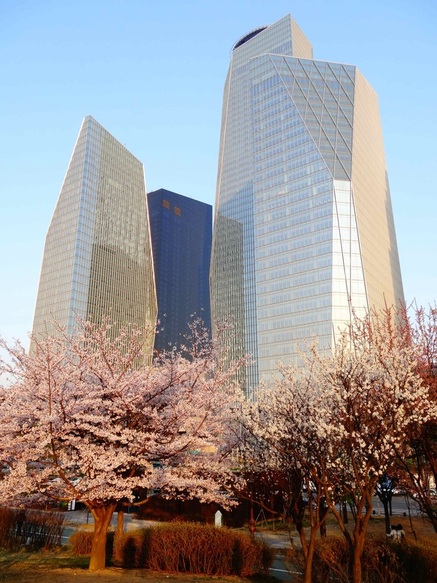 Cherry Blossoms at Yeouido Park during sunset The next morning we tried out Korean rice-porridge, known as “juk”. This dish is pan-asian as rice is a common staple across the region, having been introduced by China thousands of years ago. Neda tried the beef and mushroom variety and I had crab and spring onion. While our expectations were high, we have to give the nod to the Thai version of the dish, which was much more flavorful owing to its high use of ginger, garlic, cilantro and spicy pepper! 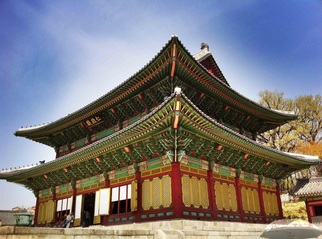 Changdeokgung Palace Throne Hall Changdeokgung Palace Throne Hall After our juk, we headed to Changdeokgung Palace where we were treated to two interesting guided tours of the grounds. First we saw the palace itself, which was constructed in 1405 as a secondary palace of the Joseon Dynasty. It burned during Japanese invasion in 1592, but was rebuilt in 1610. The throne room, King’s bedchamber, and other structures of the palace feature sweeping roofs and the forest-green and maroon color scheme of the royal family. Behind the palace lies a 78 acre “rear garden” with 300 year old trees and lotus ponds overlooking libraries and buildings the royalty used to host guests or just simply to write poetry or watch the moon. Pretty nice life!
 Library at the rear garden Kimchi  Our homemade Kimchi! The next day we decided to go a little deeper into Korean cuisine. We booked a class at the Food & Culture Korea Academy to learn how to make some of our favorites: Bulgolgi & Kimchi. To those of you familiar with Korean Cuisine, it might seem strange I didn’t mention it off the bat. The spicy fermented cabbage dish is a staple of the Korean diet, appearing as a side dish at practically every meal that we ate while in Seoul. In fact, one of the charming aspects about dining in Korea is the plethora of small sides that accompany every meal – from a simple breakfast to an elaborate dinner. You always have some kimchi, maybe some bean sprouts, tofu in spicy sauce, marinated beans, etc…  variety of kimchi variety of kimchi Kimchi is the show-stopper however. It doesn’t have to be cabbage, as there are hundreds of versions made with cucumbers, radishes, and other veggies. In fact, though the napa cabbage is the most ubiquitous type of kimchi, it wasn’t the first type made because the Chinese had yet to introduce the cabbage in the earliest years of production. Over 2,000 years ago, kimchi was produced for two major reasons: conservation and digestion. The cold winters in Korea and mountainous topography made whatever veggies that grew quite precious. So the Koreans salted them to keep them edible during the long cold winters. Additionally, rice wasn’t introduced to the peninsula until later by the Chinese. This meant early Koreans were eating mainly tough grains like barley and millet. The probiotic bacteria in kimchi helped people to extract the nutrients from the grains and also boosted their immunity.
 Making our Kimchi!  The final product - with Ellie from Food and Culture Korea Academy The class was a lot of fun as Neda & I received one-on-one attention from Ellie and other cooks in the kitchen as they prepared a smorgasbord of Korean food for an upcoming film shoot. We learned how a specific combination of fish sauce, garlic, ginger, pear juice, seaweed broth, and red chili powder transform salted cabbage into the flavor sensation of kimchi. It was also interesting to learn that early kimchi didn’t contain the spicy flavors of today’s kimchi because the chili pepper had yet to be introduced from the New World. After prepping our kimchi and frying up our Bulgogi, we sat down to eat our creations…delicious!
Dumplings & Japche
 After our class we walked along the famed Insadong Street, known for its art galleries and craft stores. We found an artisan who specialized in a unique type of calligraphy in which he creates his own custom stamps from stone, which he then presses onto parchment. We were enchanted by his portrayal of the 4 Guardian Symbols that were found in Goguryeo-era tombs from about 1000 years ago. In the tombs are beautiful drawings of the Azure Dragon of the East, the White Tiger of the West, the Black Turtle of the North, and the Red Phoenix of the South. We bought parchments of the Azure Dragon and White Tiger to symbolize our adventure from West to East and back again!
 After that big cooking class, dinner was at a little hole in the wall serving a Korean classic – the dumpling (in Korean called Mandu)! We got a sampler that contained the whole variety. The classic steamed dumpling stuffed with minced meat, green onions, garlic and ginger was delicious. However, the Japchae Goon Mandu (deep-fried dumpling stuffed with sweet potato noodles and seasonings) was stellar as was the Kimchi Mandu, a dumpling stuffed with minced meat and kimchi.
 Here is Japchae - now just imagine this stuffed into a fried dumpling...mmmm! Bibimbap
 Delicious Bibimbap in a Stone Pot! The next morning we had what may be my favorite of all the Korean dishes mentioned thus far. Our first experience with Bibimbap came not in Korea, however, but in Austin. It was there that our friend Catherine (who is half Korean) served it to us after teaching us a great Anasura-based yoga class. Literally meaning “mixed rice” bibimbap consists of a bowl of warm rice topped with sautéed and seasoned vegetables such as shitake mushrooms, spinach, carrots, and bean sprouts along with seasonings of chili pepper, soy sauce, sesame seeds, and garlic. In the middle is a raw egg that cooks as you mix it in with all the ingredients. In Seoul we found a place doing a slight variation called dolsot bibimbap, or “stone pot mixed rice”. The whole dish comes out in a hot stone bowl and the rice becomes slightly crispy as the whole thing cooks into an unbelievably delicious rice & egg mash! It’s truly “Seoul Food”!
 Dinner with Ricky Dinner with Ricky It was fitting that we ate a dish that reminded us of Catherine on this day because later that afternoon we met up with her cousin Ricky, who lives in Seoul. Ricky took us to the Namsan Hanok Village, an area where traditional Korean houses have been preserved to show the architecture of the Joseon era. It was great to meet a local person and talk with him about culture in Korea and what it is like to live in a country that is constantly under threat from its belligerent neighbor to the North. At one point as we were walking down the subway stairs and discussing North Korea, Ricky told us that people in Seoul accept that death is a possibility at any time while living there. He said there is nowhere to hide if North Korea decides to launch an attack, as he well knows having served in the military like every other able-bodied male aged 18 to 35. The interesting thing is that he said it with a sort of fierce pride that implied the people of South Korea had less fear of death as a result of it being so close at hand at any given time. It called to mind our Zen teachings, which tell us that freedom from suffering can be found by being intimate with the fact of our death. It is never easy to have death seemingly loom over us all the time, but it can force a change in perspective that if done in a spiritual way, can lead to more peacefulness instead of less as might be expected
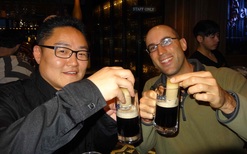 Ricky's first Irish Car Bomb Ricky's first Irish Car Bomb Beyond just the philosophy, we had a great time eating Korean BBQ with Ricky and wandering the city with him. He took us to Itaewon, a part of the city known for its Western bars, where we sipped on high quality tequila and smoked hooka together. He also encouraged us to try Makgeolli, which is an off-white colored beverage made of fermented rice. It is a probiotic laden drink that has a pleasant acidic tang to coincide with its milky flavor. Very unique and another belly booster in Korean cuisine!
Tteokbokki
 Tteokbokki The Bibimbap was so delicious that we ate it again the next morning to give us fuel for a full day of city exploration. We started by visiting the 1,200 year old Bongeunsa Zen Temple that features beautiful old temple buildings and a huge statue of the Maitreya Buddha. But the most striking thing about Bongeunsa was the many practioners in the main hall that were engaged in meditation or prostrations. In Japan we had never seen lay people doing these sorts of activities and it was very refreshing to see it here in Korea. We grabbed some cushions and sat in meditation with others, soaking in the pleasant atmosphere of the ancient place.  The main hall of Bongeunsa Zen Temple, where we meditated with other practioners From there we walked down to the Seolleung Royal Tombs, which are 500 year old burial mounds that contain Kings and Queens of the Joseon Dynasty. The park provides a pleasant break from the bustle of the city and the carved statues of horses, state officials, and other animals guarding the tombs were intricately carved and well preserved despite their age.
 Seolleung Royal Tombs  Roofs of Bukchon Roofs of Bukchon The next day we relaxed before taking to the streets to walk the Bukchon neighborhood, which contains hundreds of old Joseon-style houses lining narrow streets that are criss-crossed with even narrower alleys. The beautiful old roofs shined under the mid-day sun and made us feel like we had traveled back in time a bit. While talking about walking the streets, I wanted to make mention of one of the most popular street foods we sampled while in Seoul – tteokbokki (see pic above). Consisting of sliced rice cakes soaked in a spicy red sauce along with minute amounts of meat, this one wasn’t a hit for me. The rice cakes are quite chewy and the sauce lacked the flavor I had come to expect from Korean cuisine. Originally tteokbokki had much more meat, veggies, and eggs and was served topped with ginkgo nuts and walnuts. Those versions sounds great, but I’ll have to give the street version we had a solid thumbs down!
Kimbap
 Kimbap is like sushi but stuffed with egg, carrot, marinated lotus root, ham, daikon, cucumber and sesame oil infused rice as shown here. No need to end on a low note, however as we still haven’t reached the pinnacle of on-the-go Korean innovation – kimbap. Clearly originating from the years of the Japanese occupation, kimbap resembles a Japanese sushi roll, but has several distinct differences. Firstly, while sushi rolls in Japan tend to have only one or two ingredients inside, kimbap is more like “American sushi” being stuffed with cooked egg, daikon, cured meat & cucumber. There are other varieties, but this is the kind we saw the most, and it only cost about $1.50 for a big stuffed roll – which we saw many folks lining up for in the morning on their way to work. Kimbap also differs from sushi because instead of using rice mixed with vinegar, it is mixed with sesame oil, which imparts a nutty and delicious flavor to the whole roll. We ate it often and loved it, including two rolls a piece that held us over during our long haul from Seoul to Istanbul. That’s right folks – the eastern swing is over and we are headed back to the West. A grueling 20 hour flight (with stops) awaits as we excitedly head to the cultural capital of Turkey to meet up with Neda’s parents and start the journey home. See you there!
|
 Street Performer in a Melbourne alley
Street Performer in a Melbourne alley  Mmmm...we miss Seoul!
Mmmm...we miss Seoul! 











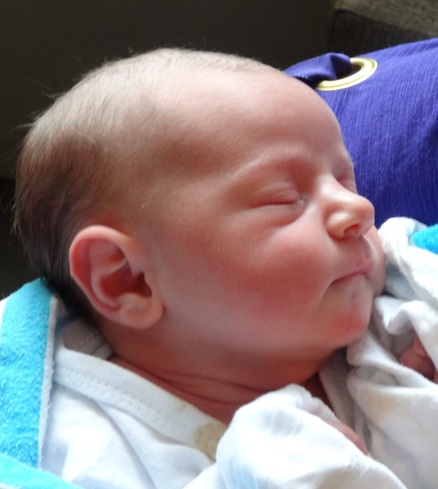



















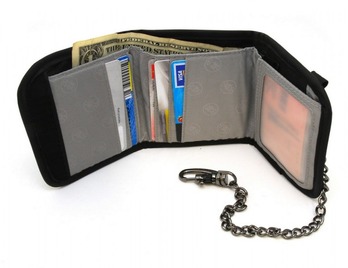

























































 RSS Feed
RSS Feed
